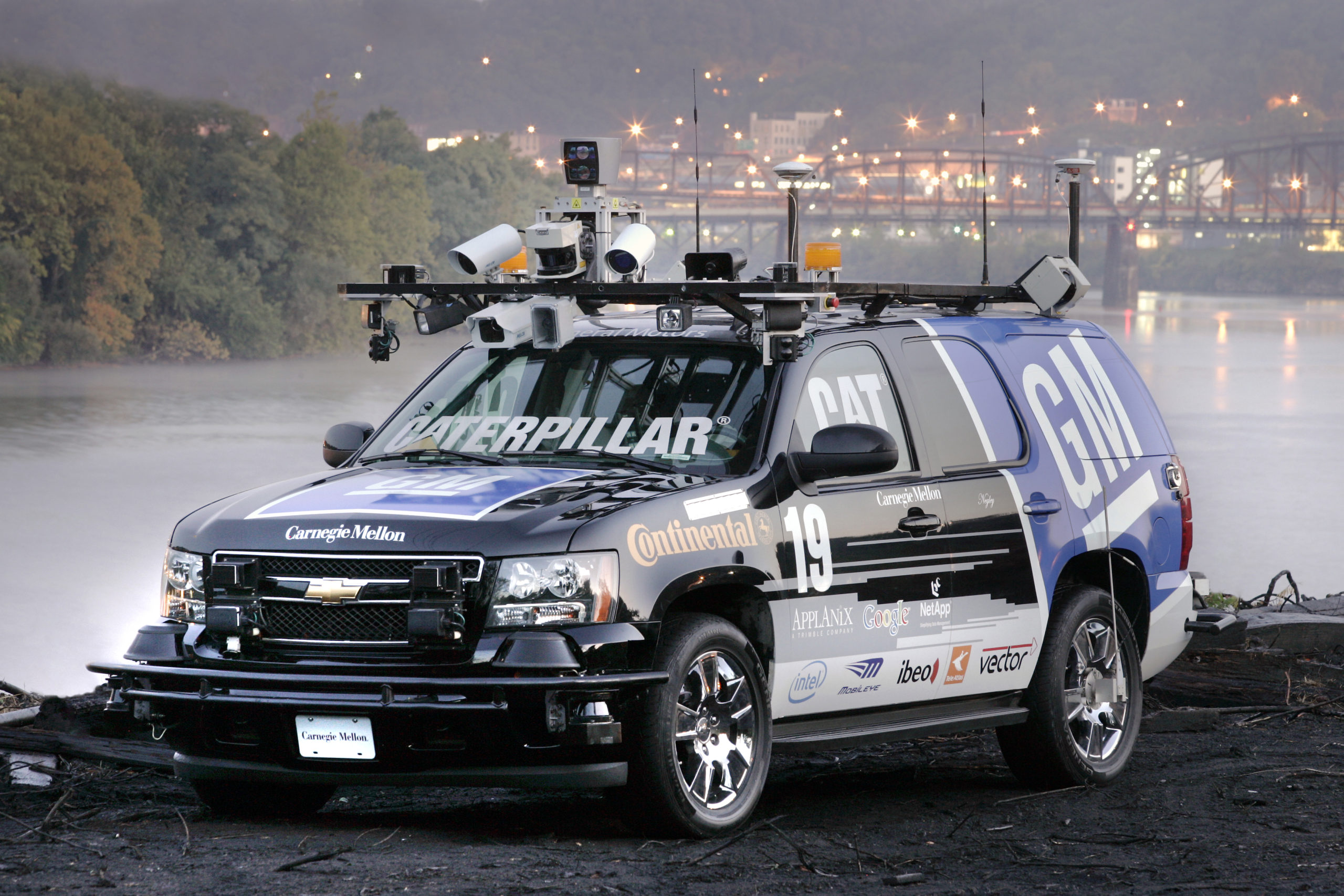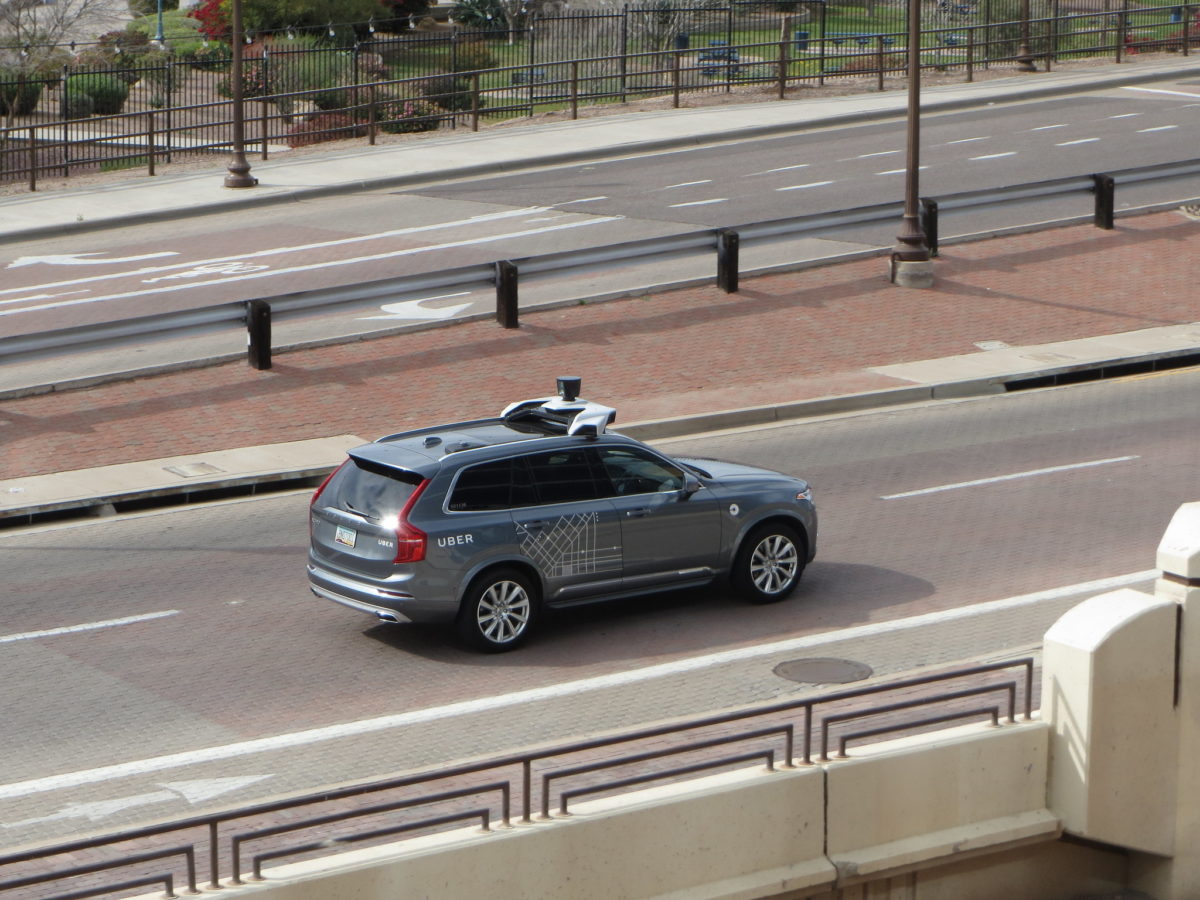The DARPA Grand Challenge is where the rubber meets the road for self-driving cars.
In 2007, a crack team of technologists from Carnegie Mellon University (CMU) called the Tartan Racing Team bested bitter rivals and ‘05 DARPA Challenge winners Stanford University by leading an AI-navigated Chevy Tahoe through an unprecedented 55 miles of simulated urban driving terrain.
More than a prize, it was a moment of technical triumph. At that event, it seemed, the promise of self-driving cars on city streets had arrived. With its wealth of industry expertise, the Tartan Racing Team’s hometown of Pittsburgh was well-positioned to lead the way as this technology was honed for wide use.
The autonomous vehicle (AV) industry’s economic potential has since shown itself in the form of 1,923 jobs created in the 10-county region of Western Pennsylvania since 2015, according to data provided by the Allegheny Conference. No company’s impact has been larger than Uber. The mobility company’s Advanced Technology Group, which opened in 2015, employs about 700 people in the pursuit of self-driving tech, according to data self-reported to the City of Pittsburgh.
Alongside the economic benefit, true believers of the tech point to the prospect that self-driving cars, beyond providing convenience, can eventually save millions of lives.
“The holy grail of this domain is that we can bring automotive fatalities and crashes to a grand total of zero,” says CMU professor of electrical and computer engineering Ragunathan “Raj” Rajkumar, adding that 94% of all traffic accidents are caused by driver error, and approximately 1.3 million annual traffic fatalities. And a 2019 BikePGH study revealed Pittsburgh cyclists prefer autonomous vehicles to human-driven vehicles.
There’s just one major problem: truly autonomous tech is still a ways away. Despite enthusiasm in recent years that autonomous vehicles would be ubiquitous by now, a 2019 New York Times report concluded that self-driving cars were still “way in the future.” In January, 2020, Alex Hitzinger, CEO of Volkswagen Autonomy, acknowledged that full autonomy “may never happen.”
It’s all leading to a more grounded approach to developing technology that has been decades in the making.
“Realistically, we’ll see varying levels of autonomy as this technology develops,” an Uber spokesperson wrote in an email. “Fully autonomous vehicles, at scale, will take time and we are prepared to take a measured approach to reach that future.”
The spokesperson added that Uber ATG remains well-funded “with sufficient cash runway through at least the end of 2021.” Uber’s current system is “a developmental self-driving system, meaning it requires observation of a trained safety driver at all times, and our goal is to achieve L4 operations as we progress,” the spokesperson said.
(Vehicle autonomy is graded on a level scale of 0-5, 5 being fully autonomous, robot-driven vehicles. The vehicles tested in Pittsburgh are in pursuit of L4, “high automation,” which still require a human driver to take control if necessary.)

Rajkumar, who also served as head of a joint General Motors-Carnegie Mellon Collaborative Research Lab, credits Uber’s decision to open its autonomous division in Pittsburgh in 2015 to the “enormous intellectual firepower” at Carnegie Mellon, and his assertion is hard to dispute: Upon arrival, Uber poached about 40 or 50 staff members from CMU to seed their research (the division is now based in Toronto).
At the time, Pittsburgh Mayor BIll Peduto famously told the New York Times that cities could either put up red tape or “roll out the red carpet” for tech firms like Uber. He publicly embraced the latter before undergoing a very public falling out with then-Uber CEO Travis Kalanick in the years to follow. It was over disputes regarding promises allegedly made by Kalanick to support the city in workforce development efforts and federal grants.
Despite the dispute and questions over Uber’s long term commitment to its autonomous tech research, the industry remains a growing presence in the city.
Rajkumar, who led the Systems Engineering Group for the winning Tartan Racing Team, supervises CMU’s self-driving car efforts in the city. He has had a front seat to the industry’s ebb and flow in the area since the ‘07 Urban Challenge triumph.
He’s proud to say he’s never left academia for the private sector, even during a stint as CEO of autonomous vehicle software company Ottomatika. The company was acquired by Aptiv, whose autonomous driving research is now known as Motional: a joint venture between it and Hyundai Motor Group. Aptiv self-reported 198 employees in the city as of April 2019.
Rajkumar’s past collaborators are a who’s-who of the autonomous tech field, and reveal the roots of Pittsburgh’s preeminence. Chris Urmson, director of technology on the winning ‘07 DARPA team, was head of Google’s driverless division prior to co-founding self-driving startup Aurora. As of 2019, the company employs about 80 people in the city, and in September 2020 announced plans to move to a 100,000-square-foot headquarters in the city’s popular Strip District.
Bryan Salesky, DARPA Challenge software engineer, is now CEO at Argo AI, where all four of the leads have strong ties to Carnegie Mellon. Argo, with a valuation of $7.5 billion, has been based in Pittsburgh since 2018, and employs 288 employees, according to information self-reported to the city.
The employment information reported to the city conforms to a March 2019 executive order by Mayor Peduto outlining data submission for the industry in Pittsburgh. This information, acquired by right-to-know request, also shows the latest on development activities: It indicates that no autonomous vehicle testing occurred in April 2020, during the COVID-19 pandemic, but in June of 2020, approximately 10,200 miles were driven autonomously by all test vehicles in the city.
The city’s Department of Mobility and Infrastructure has not yet released an annual report on the industry, as mandated by the mayor’s executive order, and records indicate that Uber, Aurora and Argo have not submitted any updates to the city since their first submission in April 2019.

Nevertheless, this concentration of talent didn’t manifest overnight. Audrey Russo, President and CEO of the Pittsburgh Technology Council, said that when she moved to Pittsburgh, in 2001, there were no outward signs of the city living up to its nickname, newly-bestowed by the Wall Street Journal: “Roboburgh.”
“Was there evidence of brilliance in research? Absolutely,” she said. “The work was renowned. But only recently have the manifestations of that work been apparent in what you and I can see in the commercial world.”
Humans have a fundamental understanding of how the world around them works and can anticipate how other humans, be they pedestrians, cyclists, or vehicle operators, will react in everyday situations. But teaching all that to computers, it turns out, is no easy task, said Professor Rajkumar.
As he explains it, AV technology is actually several different subsystems working together harmoniously. The actuation system that drives the vehicle must navigate through an urban terrain derived from a separate system of LIDAR and other sensors that piece together the world around it. Then there’s the matter of computational power itself — how the system processes the information it receives — as well as communications between these various subsystems.
Rajkumar believes the first challenge, the actuation subsystem, has been solved; however, in the quest for fully autonomous vehicles, “the bulk of the challenges remain,” he said.
Even if funding for self-driving cars were to dry up, Russo, of the Pittsburgh Tech Council, believes that Pittsburgh remains well-situated to remain a leader in autonomous technology. She points to industrial robotics firms like RE2 Robotics and Gecko Robotics as an indication the city has cultivated a niche in a growth industry. On September 15, 2020, Pittsburgh-based industrial AV company, Seegrid, closed a $52 million funding round.
Mark Thomas, newly appointed president of the Pittsburgh Regional Alliance, is tasked with no less than creating, developing and executing the 10-county Pittsburgh region’s economic development strategy. He believes that as the autonomous industry inevitably grows and expands, the city is well-situated, with its expertise and talent pool, to have it take over a more meaningful share of the economy.
In his previous role as senior VP of partnerships for the New York City Economic Development Corporation, Thomas was involved in negotiations with Amazon over the company’s proposed HQ2 in Queens. He said it’s important for corporations who come to Pittsburgh to work with the city on social responsibility.
“The companies that we would prefer investing here will actually invest in the people and not just the real estate, and not just the physical infrastructure,” he said, “because that’s where you really see inclusive economic development come to life.”







